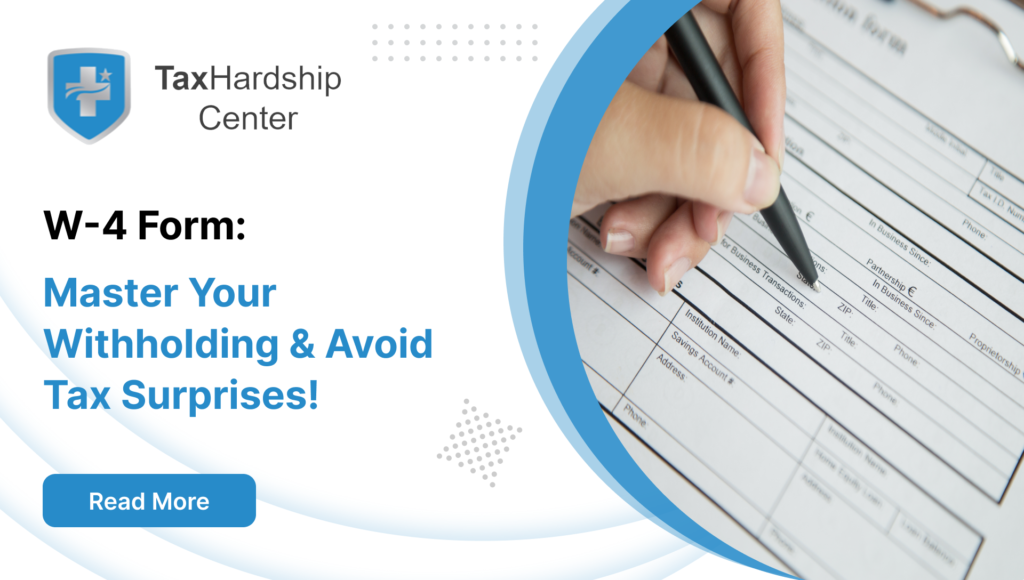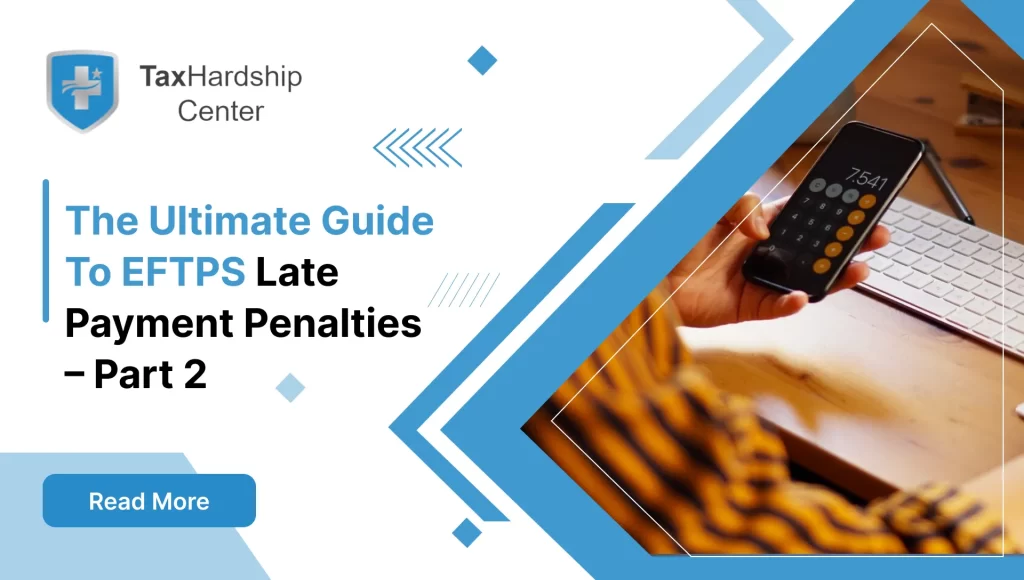Filing taxes can be intimidating, especially when it involves understanding the various forms and documents that play a role in the process. One such essential document is the W-4 form. In this article, we’ll look in-depth at the W-4 form, its purpose, and the factors influencing how it should be filled out. We will also explore the trade-offs and challenges associated with tax withholding and income tax and why making informed decisions regarding the W-4 form is essential.
What is a W-4?
The W-4 form, officially titled Employee’s Withholding Certificate, is a document employees in the United States complete and submit to their employer. The form aims to inform the employer of the employee’s tax situation so that the correct amount of federal income tax can be withheld from their paycheck.
What does a W-4 form do?
The primary function of the W-4 form is to help determine the amount of federal income tax that should be withheld from an employee’s paycheck. This withholding is crucial as it contributes to the employee’s annual income tax liability. The information provided on the W-4 form allows the employer to calculate the proper amount of tax to withhold, preventing underpayment or overpayment of taxes throughout the year.
How Tax Hardship Center Eases Tax Concerns
While completing a W-4 form is crucial for proper tax withholding, navigating the complexities of tax regulations can still be overwhelming. At Tax Hardship Center, we understand individuals’ challenges and are here to help ensure a smooth tax filing process.
Our experts can assist with:
- Choosing the Right Withholding Options: We’ll guide you through the intricacies of the W-4 form and help you select the correct withholding options based on your income and financial situation.
- Accurate Data Entry: Avoid errors and ensure your W-4 form is completed accurately to prevent issues with your tax withholding.
- Ongoing Support: We provide continuous support to help you adjust your W-4 form as your financial situation changes, ensuring you maintain the right balance in tax withholding.
- Tax Planning Advice: Receive personalized advice on tax planning to optimize your withholding and manage your tax liability effectively.
Focus on your business; we’ll handle the W-4! Schedule a free consultation with the Tax Hardship Center today.
What is the difference between a W-4 and a W-2?
While employees use the W-4 form to inform their employers of their tax situation, a W-2 form is a document employers provide to employees at the end of each year. The W-2 form summarizes an employee’s earnings and the taxes withheld from their yearly paycheck. While the W-4 form influences tax withholding, the W-2 form reports the actual income and tax withholding details to the employee and the Internal Revenue Service (IRS).
How Form W-4 Works
The W-4 form requests information from the employee, including marital status, number of dependents, and any additional income or deductions. This information calculates the appropriate amount of tax to withhold from the employee’s paycheck.
For example, if an employee has multiple jobs or their spouse works also, they may need to account for this on their W-4 form to ensure the correct amount of tax is withheld. Similarly, if an employee has dependents or qualifies for tax credits, these factors will also affect the withholding amount.
What Has Changed on Form W-4
The W-4 form has undergone significant changes in recent years to make it simpler and more accurate. The redesign, which took effect in 2020, eliminated allowances previously used to determine the amount of tax withheld. Instead, the form now relies on straightforward questions about income, filing status, and dependents to calculate withholding. This change was made to align with the changes brought by the Tax Cuts and Jobs Act of 2017.
How to Fill Out a W-4
Step 1: Personal Information
- Enter your full name as it appears on your Social Security card.
- Provide your home address, including street, city, state, and ZIP code.
- Fill in your Social Security number (SSN) accurately to ensure proper tax records.
- Select your filing status by checking the appropriate box. Your options are:
- Single
- Married filing jointly
- Married filing separately
- Head of household
- Qualifying widow(er)
Step 2: Multiple Jobs or Working Spouse
- If you have multiple jobs or are married and your spouse works, use the IRS Tax Withholding Estimator online for guidance.
- Alternatively, you can fill out the Multiple Jobs Worksheet on page 3 of the W-4 form to calculate the correct additional withholding amount.
Step 3: Claim Dependents
- If you have dependents, such as children or other qualifying individuals, you may be eligible for certain tax credits.
- Calculate the total tax credits for dependents using the Dependents Worksheet provided with the form.
- Enter the amount from the worksheet on the W-4 form where indicated.
Step 4: Other Adjustments
- Report additional income (not from jobs) like interest, dividends, or retirement income.
- Deduct additional deductions such as student loan interest or other deductible expenses not typically accounted for.
- Specify any extra withholding you want from each paycheck to avoid owing tax when you file your return.
Step 5: Sign and Date
- Review the form to ensure all information is complete and accurate.
- Sign and date the form to validate it. Unsigned forms are not valid.
Additional Notes:
- Adjust your W-4 anytime during the year if your personal or financial situation changes.
- Submit the new W-4 to your employer as soon as possible after making changes.
Following these steps, you can accurately complete your W-4 form and effectively manage your tax withholding. Consult with a tax professional if you have specific questions or circumstances.
Where can I download the new Form W-4?
The latest version of the W-4 form can be downloaded directly from the IRS website. Simply visit IRS.gov and search for Form W-4. Ensure you use the most recent version to comply with the current tax laws and guidelines.
Are all employees required to furnish a new Form W-4?
No, not all employees must furnish a new W-4 form each year. However, it is an excellent practice to review and update your W-4 form if you have significant life changes, such as marriage, divorce, the birth of a child, or a change in employment status. New employees must complete a W-4 form when starting a job.
How to adjust your Form W-4?
Feeling like Uncle Sam is taking a bigger bite out of your paycheck than necessary? Or you’re getting surprise tax bills yearly because more needs to be withheld. The good news is you have some control! The Form W-4, the Employee’s Withholding Certificate, is your key to fine-tuning how much federal income tax gets withheld from each paycheck.
Here’s a breakdown of how to adjust your W-4 for a smoother tax experience:
- Need more withheld? You can increase the amount withheld from your paycheck if you owe taxes yearly. Head to Step 4(c) on the W-4 and enter an additional dollar amount you’d like withheld each pay period.
- Are you feeling the pinch? Are you constantly surprised by a hefty tax bill come April? You can decrease the amount withheld. This can be done by adjusting the number of dependents you claim (line 5) or revising the deductions you report (line 4a).
What changes should I make? The IRS offers a helpful online tool called the Tax Withholding Estimator. This handy resource lets you plug in your expected income, filing status, deductions, and credits to see how much tax should be withheld from your paycheck. It’s like a personalized tax calculator that helps you avoid overpaying or underpaying throughout the year.
Remember, the goal is to withhold as close to your actual tax liability as possible. This minimizes the chance of a big tax bill come filing season and ensures you’re not giving Uncle Sam an interest-free loan throughout the year. By taking a few minutes to adjust your W-4, you can take control of your paycheck and achieve tax-filing peace of mind.
Can you use the W-4 form for self-employment income?
No, the W-4 form is not used for self-employment income. Self-employed individuals are responsible for paying their estimated taxes quarterly using Form 1040-ES, Estimated Tax for Individuals. They must calculate their tax liability and pay the IRS to avoid underpayment penalties.
When should you update your W-4?
It is important to update your W-4 form whenever changes in your personal or financial situation could affect your tax liability. Some common scenarios that may require you to update your W-4 form include:
- Marriage or divorce
- Birth or adoption of a child
- Significant changes in income
- Starting a second job
- Spouse starting or stopping work
- Changes in tax deductions or credits
Regularly reviewing and updating your W-4 form helps ensure you are paying your taxes appropriately throughout the year.
Can you claim exemption from tax withholding on your W-4?
Yes, under certain circumstances, you can claim exemption from tax withholding on your W-4 form. To qualify for exemption, you must meet both of the following conditions:
- You had no federal income tax liability in the previous year.
- You expect to have no federal income tax liability in the current year.
If you qualify, you can claim an exemption by writing Exempt in the space provided on the W-4 form. However, remember that claiming an exemption will result in no federal income tax being withheld from your paycheck, and you may still be liable for taxes at the end of the year if your situation changes.
The Importance of Accurate Tax Withholding
Accurate tax withholding is essential to managing your tax liability effectively. Under-withholding can lead to an unexpected tax bill and potential penalties, while over-withholding means you are giving the government an interest-free loan throughout the year. By understanding and accurately completing your W-4 form, you can ensure that you are withholding the correct amount of tax, thus avoiding surprises during tax season.
Trade-offs and Challenges
One of the significant trade-offs in tax withholding is finding a balance between having enough tax withheld to avoid a large tax bill at the end of the year and having too much withheld, resulting in a small paycheck. This balance can be challenging, especially if your financial situation changes frequently.
Another challenge is understanding the complexities of the tax code and how different life events can impact your tax liability. For example, getting married or having a child can significantly affect your tax situation, and it is essential to adjust your W-4 form accordingly.
Making Informed Decisions
When filling out your W-4 form, it is crucial to consider your overall financial situation and long-term tax planning goals. Resources such as the IRS’s online Tax Withholding Estimator and consulting with a tax professional can help you make informed decisions. Regularly reviewing your withholding and updating your W-4 form as needed can help you manage your tax liability more effectively.
Conclusion
The W-4 form is vital in ensuring that the correct amount of federal income tax is withheld from your paycheck. By understanding its purpose, how it works, and how to fill it out accurately, you can manage your tax liability more effectively and avoid surprises during tax season. Regularly reviewing and updating your W-4 form in response to changes in your financial situation can help you maintain the right balance in tax withholding, ensuring that you pay the right amount on your taxes throughout the year. Whether you are a new employee starting a job or a seasoned worker experiencing life changes, taking the time to understand and accurately complete your W-4 form can significantly impact your financial well-being.
Why Tax Hardship Center?
1. Hassle-Free Assistance:
Say goodbye to sleepless nights and endless tax-related stress. At the Tax Hardship Center, we believe in simplifying the complex. Our team of experts is dedicated to guiding you through every step of the process, ensuring that your tax concerns are met with precision and care.
2. 14-Day Money Back Guarantee:
We’re so confident in our ability to ease your tax worries that we offer a 14-day money-back guarantee. If, for any reason, you’re not satisfied with our service, we’ll gladly refund your investment. Your peace of mind is our top priority!
3. Free Consultation:
Are you curious about how we can transform your tax experience? Book a free consultation now! Our team will assess your situation, answer your questions, and provide free insights tailored to your needs.
4. Nationwide Coverage:
No matter which corner of the United States you call home, the Tax Hardship Center covers you. We proudly serve all 50 states, bringing our expertise to your doorstep. Wherever you are, our commitment to excellence follows.
FAQs:
1. Do I Have to Fill Out Form W-4 if I Don’t Work Full Time?
Yes, even if you are not working full-time, you must still complete a W-4 form. The tax withheld from your paycheck will be based on the information you provide on the form. Part-time employees, seasonal workers, and students with part-time jobs should ensure they complete a W-4 form to have the appropriate amount of tax withheld.
2. What should I do if I have multiple jobs or my spouse also works?
If you have multiple jobs or your spouse works, you need to account for this on your W-4 form to ensure the correct amount of tax is withheld. You can use the IRS’s online Tax Withholding Estimator or the worksheet included with the form to determine the proper withholding amount.
3. Can I claim an exemption from withholding on my W-4 form?
You can claim exemption from withholding if you had no federal income tax liability in the previous year and expect to have none in the current year. To claim an exemption, write “Exempt” in the space provided on the W-4 form. However, if your situation changes, you may still owe taxes at the end of the year.
4. What happens if I still need to fill out a W-4 form?
If you don’t fill out a W-4 form, your employer must withhold taxes at the highest rate for single filers with no adjustments. This could result in more tax being withheld from your paycheck than necessary, potentially leading to a larger refund when you file your tax return.
5. How can the Tax Hardship Center help with my W-4 form?
Tax Hardship Center can help you complete your W-4 form, ensure accurate data entry, and choose the right withholding options. We provide ongoing support to adjust your withholding as needed and offer personalized tax planning advice to manage your tax liability effectively. Schedule a free consultation with us to get started.








